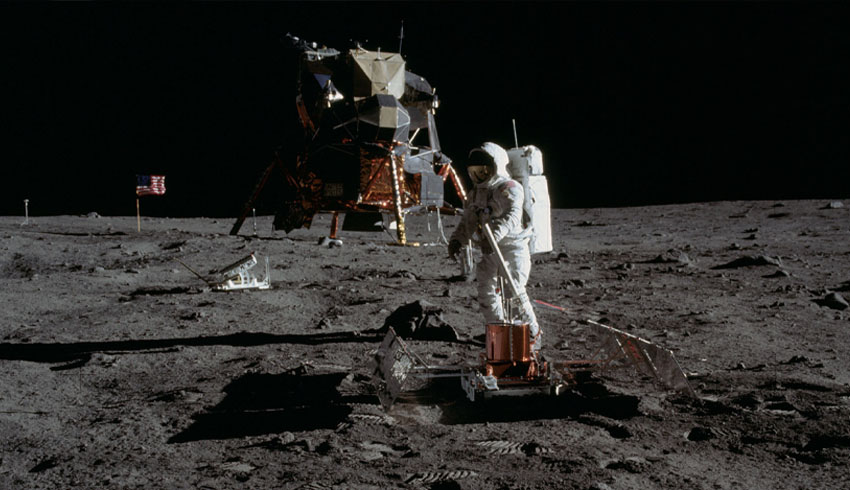
From the Gemini program in the early 1960s through the planned return to the moon by 2024, KBR has supported eight NASA human spaceflight programs. The company has accompanied NASA, in the words of Kennedy, "… on the most hazardous and dangerous and greatest adventure on which man has ever embarked".
Along the way, in a testament to the value of KBR’s many contributions, astronauts, including Neil Armstrong, served as members of the board of directors at one of KBR’s heritage companies.
The work conducted by Brown & Root included general site development; master planning; design of the flight project facility, the engineering evaluation laboratory and the flight operations facility; and various site utilities. The centre became the home for NASA’s astronaut corps and Mission Control Centre.
Brown & Root continued to be a critical asset at the site after this major project. In 1964, the company formed a joint venture with Northrop and won a contract to perform operational and support services for the centre’s laboratories, test facilities and technical service shop. NASA used these facilities to checkout Project Gemini and Apollo spacecraft and on-board spaceflight equipment, and train astronauts.
By 1970, about 700 Brown & Root/Northrop (BRN) employees worked at the NASA centre site assisting in the operation of its Space Environment Simulation Laboratory, Crew Systems Laboratory, Experimental Mechanical Laboratory, Lunar Receiving Laboratory, Toxicology Laboratory and Thermochemical Test Area.
The employees also provided clinical laboratory support, helped with the operation of the centre’s centrifuge and aided in a wide variety of tests performed on space equipment.
Propelling humanity to the stars
While Brown & Root laid the literal foundation of NASA’s space program, KBR’s heritage company Wyle Laboratories helped propel NASA towards its celestial goals. In the 1950s, the company was the first to flow large quantities of liquid hydrogen that became the fuel of choice for the Saturn V rocket that launched Apollo 11.
In the 1960s, its lab in Huntsville, Alabama, tested and evaluated the Saturn V rocket. This work included environmental and load testing.
In 1965, Wyle Laboratories established field operations at Kennedy Space Center in Cape Canaveral, Florida, and in the second half of the decade, its Virginia facility at NASA Langley performed a wide variety of engineering services and operated numerous specialised test operations, including several wind tunnels, vibration and acoustic testing, and other flight-related test activities.
The company also worked with IBM as it developed new technologies to provide flight qualifications testing to qualify the Lunar Excursion Module (LEM) for the moon landings.
Supporting the explorers of the final frontier
During the 1960s, another heritage company, then known as Technology Inc. (TI) – later renamed Krug Life Sciences, which also became part of Wyle – provided NASA with pivotal life science research.
The company won its first four-person contract to conduct cardiovascular health research of astronauts at what would become Johnson Space Center. Through this contract and follow-on awards, the company worked closely with NASA’s Apollo missions, starting with Apollo 7. Bob Ellis, who joined the company in 1967 and retired in 2011, remembers its early days.
Throughout Apollo and beyond, TI created and modified many products, like packaged food, to enhance and protect the lives of astronauts in space. During the early days of the Apollo program, an astronaut’s menu consisted of liquid meals in tubes. The company researched forms of packaging to provide astronauts with food similar to what they ate at home.
The team also helped NASA integrate products like Tang (a commercially available fruit-flavoured 'space drink' popular with children in the late 20th century) and food that could be consumed with utensils to make astronaut’s meals more appetising. Employee Dr Clayton Huber even invented a quick and easy way to prepare rice in space without boiling water by altering physical properties of the rice starch.
This July, the world celebrates the 50th anniversary of man’s first step on the moon – a milestone in human history that KBR helped NASA achieve. Through the company’s decades of support and innovation, from architecture and rocket testing to biomedical research, it has also helped set the stage for the future.
Today, as one of the world’s largest human spaceflight support organisations and as NASA’s second largest support services contractor, KBR continues to assist with groundbreaking space missions.
The KBR company has over 2,700 employees at 11 NASA sites who are helping solve the agency’s biggest challenges and working with a new generation of commercial space companies to write the next chapter of space exploration, discovery and commerce.
Given President Donald Trump’s recent challenge to land Americans on the moon by 2024 and sustain a lunar presence by 2028, KBR stands ready with its expertise in space technology, aeronautics, science, exploration and operations. The challenge and the unknown of space has never daunted KBR employees. They embrace it and look forward to the opportunities and discoveries they will help make. As the saying goes, “to the moon and beyond”.
Receive the latest developments and updates on Australia’s space industry direct to your inbox. Subscribe today to Space Connect here.









